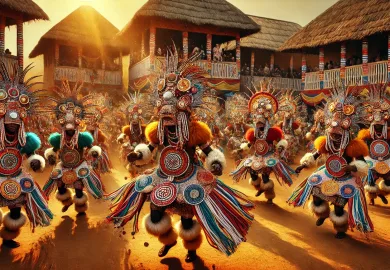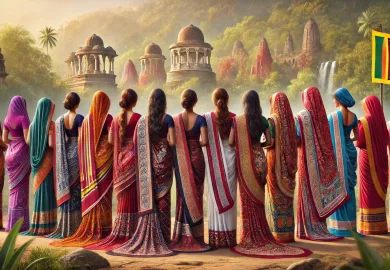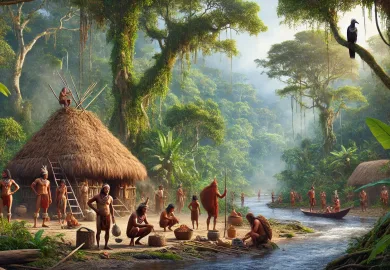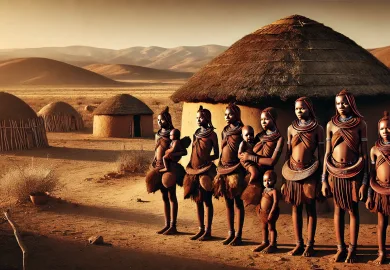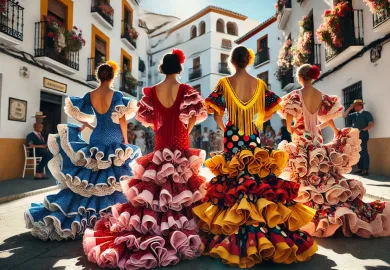
The ten-gallon Stetson cowboy hat stands as a symbol of rugged American individuality, the wild West, and the rich history of Texas. With its roots deeply entwined with cowboy culture and frontier tradition, this hat has become an icon recognized worldwide. From cattle drives to fashion runways, the ten-gallon Stetson endures as a mark of style, function, and Texas heritage.
The ten-gallon Stetson has earned legendary status not just because of its appearance, but also due to the stories behind its creation, utility, and association with some of the most famous figures in American history. This article will delve into the fascinating world of the ten-gallon Stetson, uncovering its rich history, craftsmanship, myths, and continuing influence.
The History of the Ten-Gallon Stetson
The story of the ten-gallon Stetson begins with a man named John B. Stetson. Born in 1830 in New Jersey, Stetson was the son of a hatter, and after a brief stint in the American West during the mid-19th century, he was inspired to create a durable, wide-brimmed hat suited for the harsh environment of the frontier. The legend goes that Stetson, while on a hunting trip, fashioned a large hat from beaver fur felt to shield himself from the elements. This prototype would become the foundation of the iconic Stetson hat.
Stetson moved back East and in 1865, he opened a hat-making business in Philadelphia. He designed what would later be known as the “Boss of the Plains,” a wide-brimmed, high-crowned hat that would become popular among cowboys, ranchers, and even lawmen. The name “ten-gallon” is believed to have originated from the hat’s large size, though some attribute it to the Spanish term “galón,” meaning braid, which may have referred to the hatbands worn around the crown.
The ten-gallon Stetson became a practical necessity for people working in the sun-drenched, unpredictable climate of the American West. It protected them from the elements, provided shade, and could even be used to carry water or fan a fire. The combination of its practicality and distinctive look quickly made it a fashion statement, leading to its lasting cultural significance.
The Unique Craftsmanship Behind the Stetson Hat
The creation of a ten-gallon Stetson involves an intricate process rooted in age-old hat-making traditions. Each hat is meticulously crafted to ensure durability, style, and comfort. Made from high-quality materials such as beaver or rabbit fur felt, modern Stetsons are a testament to the brand’s commitment to quality.
The process begins with the raw fur, which undergoes a felting process. The fur is cleaned, combed, and shaped into a dense mat that forms the hat’s body. The felt is then steamed and pressed into shape, creating the tall crown and wide brim that distinguish the ten-gallon hat. Once the shape is formed, artisans work on the fine details like stitching, applying the hatband, and finishing the edges of the brim.
The design of the ten-gallon Stetson ensures it is not just stylish, but highly functional. Its wide brim shields the wearer from harsh sunlight, while the tall crown allows for ventilation, making it ideal for long days in the sun. Over time, the hat molds to the shape of the wearer’s head, becoming a personal accessory that is both comfortable and practical.
Each Stetson is built to last, with some hats passing through generations as treasured heirlooms. The durability and timeless appeal of the ten-gallon Stetson make it a valuable investment for anyone looking to add a piece of authentic Western culture to their wardrobe.
The Myth of the “Ten Gallons”
One of the most enduring myths about the Stetson is the notion that its crown can hold ten gallons of water. While this makes for a fun legend, the actual capacity of the hat is nowhere near ten gallons. The myth likely arose from two sources: the impressive size of the hat and a misunderstanding of language.
As mentioned earlier, the term “ten-gallon” might have been a misinterpretation of the Spanish word “galón,” which refers to the braided hatbands that often adorned cowboy hats in the Southwest. Alternatively, the hat’s ability to hold water, albeit much less than ten gallons, might have contributed to the exaggerated tale. Cowboys were known to dip their Stetsons into streams to fetch water for themselves or their horses during long rides.
Although the ten-gallon myth has been debunked, the story persists, adding a layer of folklore to the Stetson’s already legendary status. The myth speaks to the hat’s larger-than-life reputation, symbolizing the spirit of the Old West, where tales grew as big as the land itself.
The Stetson’s Role in Pop Culture
Over the years, the ten-gallon Stetson has transcended its utilitarian origins to become a cultural icon, appearing in film, television, music, and fashion. Its association with cowboys, sheriffs, and outlaws has cemented its place in the visual lexicon of the American West, making it an instantly recognizable symbol of rugged individualism and freedom.
One of the most famous wearers of the ten-gallon Stetson was John Wayne, whose portrayal of strong, silent cowboys helped to popularize the hat in Hollywood Westerns. Wayne’s towering presence, often adorned with a broad-brimmed Stetson, became synonymous with the cowboy archetype. This helped solidify the Stetson’s place in the broader American imagination.
The ten-gallon hat has also made its mark in country music, with stars like George Strait, Garth Brooks, and Willie Nelson often spotted wearing Stetsons on stage. The cowboy hat has become as much a part of country music as guitars and boots, further embedding it into the fabric of American culture.
Today, the ten-gallon Stetson continues to appear in popular media, from modern-day country singers to fashion runways. The hat remains a versatile symbol, representing both the past and the present, tradition, and reinvention.
The Texas Connection
No discussion of the ten-gallon Stetson would be complete without exploring its deep connection to Texas. While the hat was created by John B. Stetson in Pennsylvania, it became synonymous with the Lone Star State due to its widespread use among ranchers, cowboys, and lawmen in the region. Texas, with its vast landscapes, cattle ranching culture, and love of Western traditions, became the perfect place for the Stetson to thrive.
For Texans, the ten-gallon hat is more than just a fashion accessory—it’s a symbol of their heritage. The state’s long history of cattle ranching and its cowboy lifestyle made the Stetson an essential part of everyday life for many. The hat became a badge of honor, worn by those who worked the land and lived the cowboy way of life.
Even today, the ten-gallon Stetson remains an integral part of Texas culture. It’s not uncommon to see people donning Stetsons at rodeos, state fairs, and other events that celebrate Texas pride. The hat has also become a symbol of Texas hospitality, often presented as a gift to visiting dignitaries and celebrities.
The ten-gallon Stetson’s connection to Texas extends beyond its practical use. It has become an enduring symbol of the state’s values—strength, resilience, and independence.
How the Ten-Gallon Stetson Is Worn Today
Though its roots are in the Old West, the ten-gallon Stetson remains a relevant fashion statement in the modern world. Today, the hat is worn by a diverse range of people, from ranchers and rodeo stars to fashion-forward individuals who appreciate its unique blend of history and style.
In the world of fashion, the Stetson has been reimagined in various ways, with designers incorporating it into contemporary looks. While the traditional felt version is still popular, the Stetson is now available in a range of materials, colors, and designs, allowing it to appeal to a broader audience.
Despite these modern adaptations, the Stetson retains its core identity. It remains a symbol of rugged individualism and Western heritage, qualities that continue to resonate with people today. Whether worn as a practical tool or as a fashion statement, the ten-gallon Stetson carries with it a sense of history, adventure, and timeless style.
Choosing the Right Stetson for You
If you’re considering purchasing a ten-gallon Stetson, it’s essential to know how to choose the right hat for your needs. While the hat’s appearance is important, factors like fit, material, and functionality should also be considered.
First, ensure the hat fits properly. A well-fitting Stetson should rest comfortably on your head without being too tight or too loose. The crown should provide adequate ventilation, and the brim should be wide enough to shield your face from the sun. Many Stetson retailers offer custom fitting services to ensure you find the perfect size.
Next, consider the material. Traditional Stetsons are made from beaver or rabbit fur felt, but modern versions are available in a variety of materials, including wool and straw. The material you choose will depend on the climate and your intended use for the hat. For example, a felt Stetson is ideal for colder weather, while a straw version is better suited for warmer climates.
Finally, think about how you plan to use the hat. If you’re looking for a Stetson for practical use—such as for ranch work or outdoor activities—opt for a durable model with a wide brim and reinforced edges. If you’re purchasing a Stetson for fashion purposes, you might want to explore the more stylish options available in various colors and designs.
Choosing the right ten-gallon Stetson is a personal decision, and it’s worth taking the time to find a hat that fits your lifestyle and aesthetic preferences.
Conclusion: The Lasting Legacy of the Ten-Gallon Stetson
The ten-gallon Stetson is more than just a hat—it’s a symbol of American heritage, Western culture, and Texas pride. From its humble beginnings as a practical accessory for cowboys to its status as a fashion icon, the Stetson has left an indelible mark on both American history and global culture.
Its timeless appeal lies in its combination of function and style, making it a beloved item for ranchers, fashionistas, and everyone in between. Whether worn to protect against the elements or as a statement of individuality, the ten-gallon Stetson continues to represent the enduring spirit of the American West.
As long as there are open ranges, rodeos, and Texas sunsets, the ten-gallon Stetson will remain an iconic symbol of the American cowboy, standing tall and proud, just like the land from which it came.

